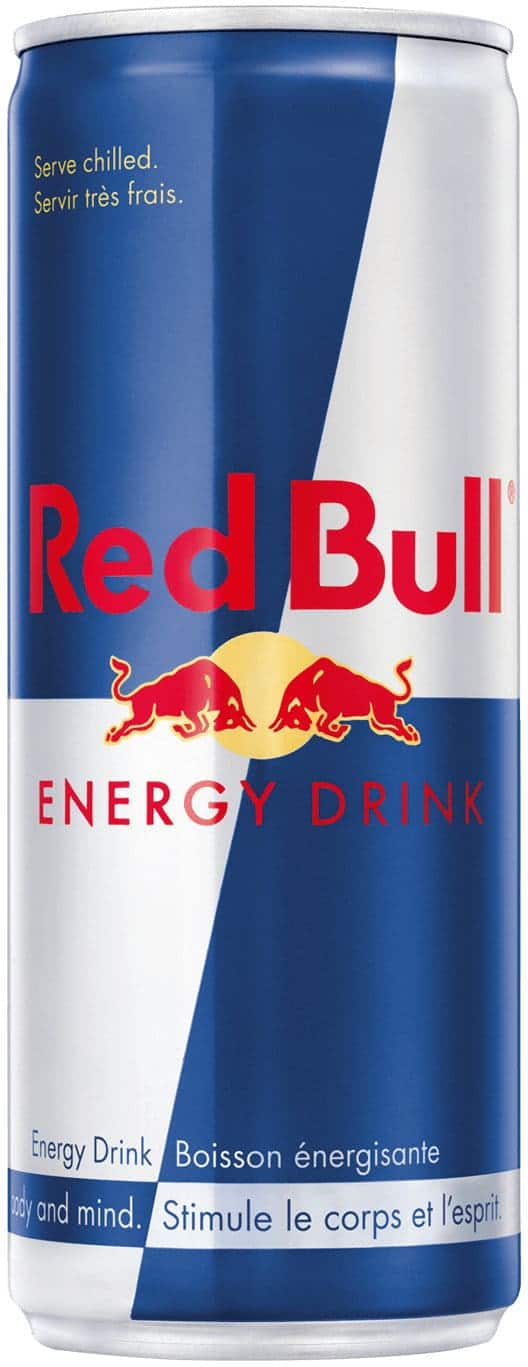A Parent’s Handy Guide to Understanding Red Bull
Welcome, super-parents! Let’s explore the ins and outs of Red Bull and how it may affect your dynamic youngsters!
What Is In a Can of Red Bull?
Hey there, savvy guardians of the next generation! Are your kids buzzing about Red Bull? Are they curious to try that brightly colored can they see sports stars endorsing? If you’re nodding your head, you’re in the perfect spot. We’re diving right into what Red Bull really is and what dances inside that magical can.
Red Bull is an energy drink designed to rev up the human engine, often sought after for its quick fix of alertness and vigor. Each can is a concoction of caffeine, taurine, B-vitamins, sugar, and water, artfully carbonated for that fizzy kick. Sounds harmless? Well, hold that thought as we chat about each ingredient with a sprinkle of science and a dash of care!
Caffeine Content: How Much Is Too Much?
Giddy up, dear readers, because we’re tackling caffeine first! It’s the zing in your espresso, the pep in your step, and yes, the main buzz agent in Red Bull. Each can contains about 80 mg of caffeine, equivalent to a cup of home-brewed coffee. While some caffeine can make a dull morning bright, too much can make your kiddo’s heart race like a sprinter in the Olympics!
Taurine: The Mysterious Ingredient
Next up is taurine, a naturally occurring amino acid that the body uses in heaps of critical functions. The word on the street is that it can give those muscles and brain cells an extra lift. However, the actual effects of taurine when guzzled down in an energy drink are still a bit of a chin-scratcher for scientists.
Sugary Tales: The Sweet Reality
Wave hello to sugar, the sweet fairy dust in Red Bull that can turn your docile munchkin into a hyperactive whirlwind. Here’s the drill: a single can has roughly 27 grams of sugar. That’s nearly 7 teaspoons! Consuming too much sugar can be like a roller coaster for blood sugar levels, not to mention the dental cavities it can invite, yikes!
B-Vitamins: The Body’s Little Helpers
B-vitamins are the body’s loyal sidekicks, aiding in turning food into energy. Red Bull comes packed with these good folks, but the question is, do kiddos really need that extra punch? Or are they getting enough of the good stuff from their super-hero themed multivitamins?
Hydration: Ride the Water Wave
Let’s not overlook the base of it all – water. While a big splash of water is the main ingredient, once you pair it with caffeine and sugar, you’re looking at a sneaky dehydrator in disguise. Encourage your kiddos to catch the real wave with pure water – it’s nature’s energy drink!
Now that we’ve swished around the ingredients in a can of Red Bull, let’s zoom into what they can do to your youngling’s noggin and wiggle toes. Coming up, we’ll talk about the effects of energy drinks on children and teens, how to set safe consumption limits, and healthier alternatives to keep your champs in tip-top-shape!

Understanding the Buzz: A Deep Dive into Red Bull for Parents
1. Age Matters: Is Red Bull Suitable for Children?
First and foremost, let’s talk age restrictions. Red Bull isn’t recommended for children due to its high caffeine and sugar content. It’s formulated for adults with a clear disclaimer that it’s not intended for children. Make sure your young athletes and scholars are sticking to age-appropriate drinks that won’t overstimulate their developing systems.
2. Know the Legal Limits: Governmental Guidelines on Energy Drinks
Secondly, it’s wise to be up-to-date with the official word on energy drinks. Many governments and health organizations suggest specific age limits for caffeine intake. Some countries even went as far as banning the sale of energy drinks to anyone under 18. Keep informed about the legal and health advisories to ensure you’re making guided choices.
3. The Need for Speed or Sleep? Discussing Balance with Your Children
Third in our lineup is the delicate dance of energy and rest. Red Bull is often used as a fast track to alertness, but at what cost? Chat with your children about the importance of natural sleep, good nutrition, and regular exercise as the cornerstones of sustainable energy. Supplements and energy drinks can’t replace good old-fashioned z’s and a balanced plate.
4. Deceptive Marketing: Teaching Kids to Read Behind the Lines
Fourthly, let’s peek at the world of marketing. Red Bull excels with its sporty, high-flying ad campaigns. It’s essential to teach your children critical thinking when it comes to advertising. Encourage them to ask questions and research on their own. Just because a champion skateboarder sips Red Bull before a big stunt doesn’t mean it’s a wise choice for an after-school pick-me-up.
5. Alternative Energizers: Swap the Can for Healthier Options
Lastly, explore the world of alternatives. There are plenty of ways to boost energy without reaching for a Red Bull. Think about healthy snacks like fruits, nuts, and yogurt. Look into natural beverages like coconut water or green smoothies. Even the humble banana can be a superstar for an on-the-go energy boost. Arm your kids with a variety of better choices, and they’ll thank you with their bright-eyed, bushy-tailed best selves.
Knowing about Red Bull is the first step. The next, and arguably more important step, is engaging in an open conversation with your kids. Discuss the pros and cons, reasons for using it, and safer alternatives. Cultivating an environment where they feel comfortable discussing these choices is just as crucial as the knowledge itself.
For more great articles please see here. For more information see here
Disclaimer
The articles available via our website provide general information only and we strongly urge readers to exercise caution and conduct their own thorough research and fact-checking. The information presented should not be taken as absolute truth, and, to the maximum extent permitted by law, we will not be held liable for any inaccuracies or errors in the content. It is essential for individuals to independently verify and validate the information before making any decisions or taking any actions based on the articles.




